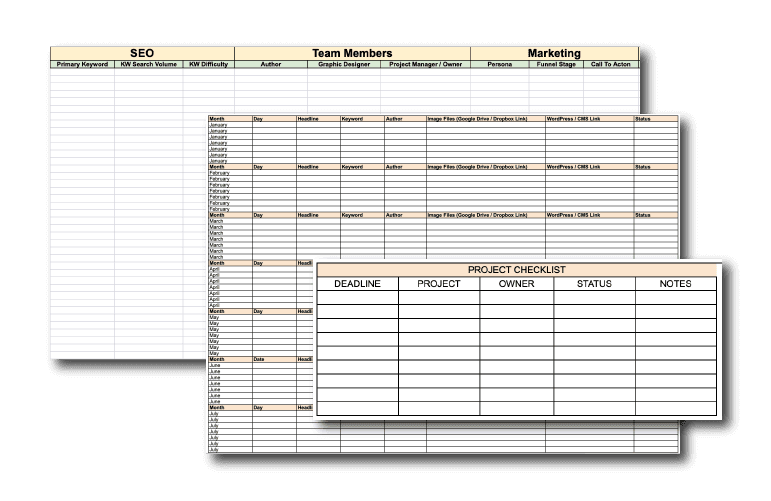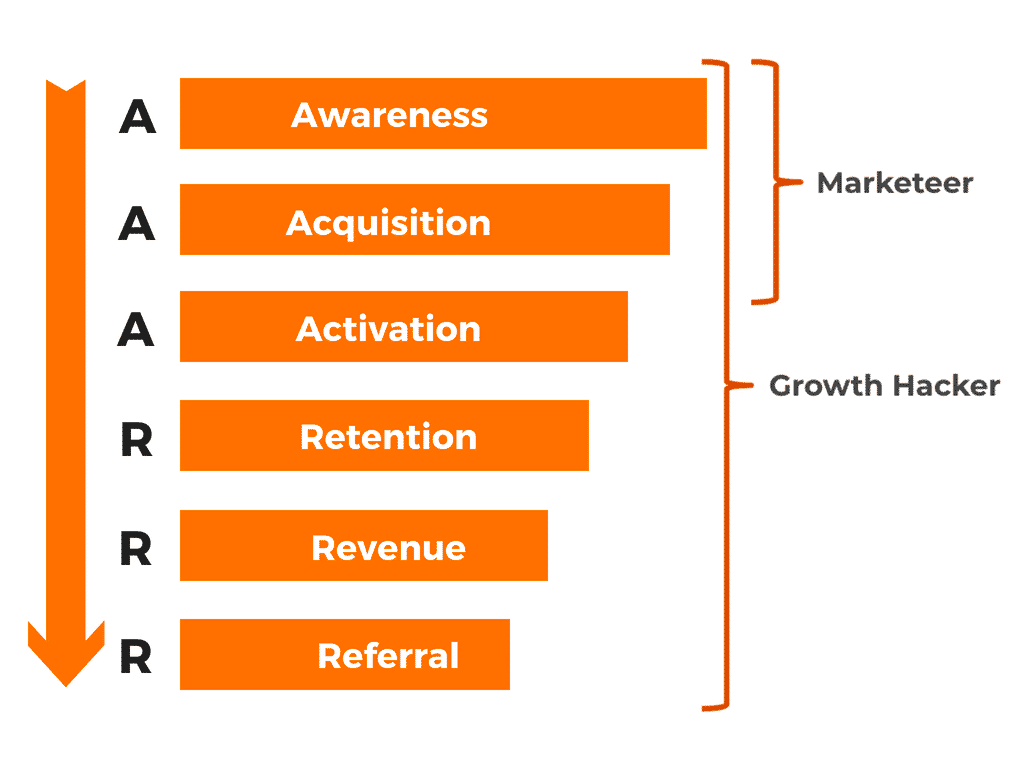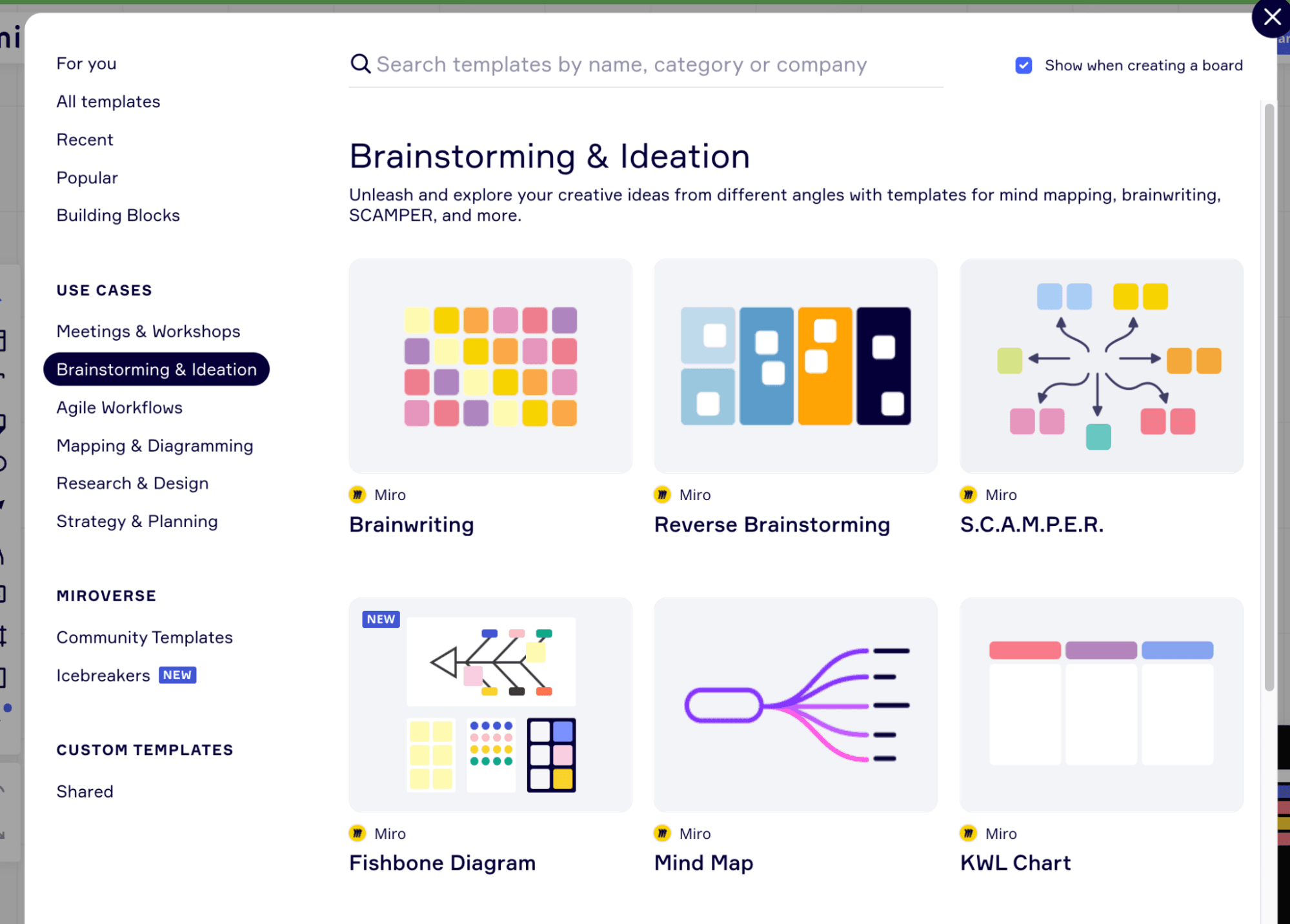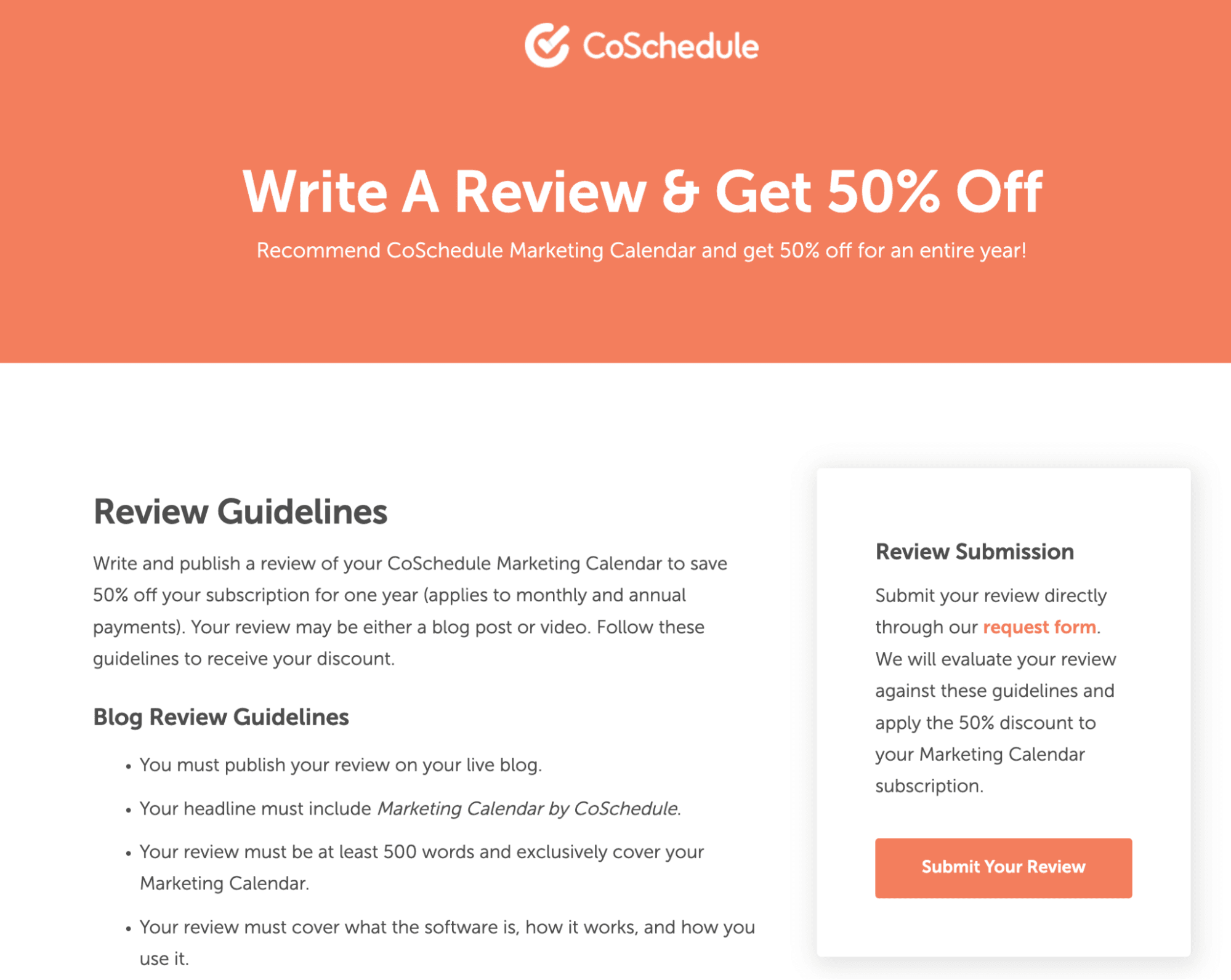As marketers, we almost always have growth on our minds.
And not just any growth—measurable, repeatable, sustainable growth that can serve our customers and employees equally well.
This is where growth marketing comes in. In this guide, we’re diving into all you need to know about growth marketing to make it part of a strong foundation for your company to flourish.
Execute Your Growth Marketing With The Calendar Bundle
If you’re looking to organize your growth marketing approach; you’ll need the right tools to get you started. Check out this trio of templates, including:
- Annual Content Calendar Template, for effectively planning out your content all year long and keeping your team organized.
- Advanced Content Calendar Template that offers an alternative structure and layout.
- Basic Blog Calendar Template for managing a simple blogging schedule

Get Your 2022 Content Calendar Templates
Plus, join our email list to stay up to date.
Success! Your download should start shortly. Or you can download it manually here.
[table of contents]
What Is Growth Marketing?
Growth marketing is a marketing approach that heavily relies on setting goals and continuously testing and experimenting to hit them.
Its ultimate goal is to generate tangible growth for the company. Unlike traditional marketing, growth marketing focuses on all touch points between the customer and your company. In other words, it’s not just about completing the buying process but their experience after becoming your customer.
Growth marketers treat their work with a scientist’s mindset. To create long-term growth, they look for opportunities that will make a lasting impact.
Here’s what makes up growth marketing experiments:
Objective: What is the end goal of your experiment? Some examples include increasing free trial signups, reducing churn rate, or growing the free-trial-to-paid conversion rate.
Hypothesis: What will you change to hit your objective? How will you measure it? Your hypothesis can have a simple format. For example, “We believe that [personalizing free trial onboarding emails] will [increase free-to-paid conversion rate] because [users will have stronger knowledge of the product relevant to them].” Tweak this example with your own action, outcome, and reason.
Experiment: How will you track the impact of the changes you made? Best experiments compare a control version with the one you made changes on. For example, a segment of new customers will see the free trial onboarding as it is right now, and another segment will see an updated version.
Results: Have you confirmed or disproved your hypothesis? Compare results between your control and test variation. If your test variation won, it’s likely a marketing effort worth pursuing in the longer run. If there’s no difference—or the control variation performed better—you’ll want to go back to the drawing board.
Iteration: How can you keep learning from your experiment? Use what you’ve learned to make tweaks and keep measuring their impact on the objective of your experiment.
Sharing: How can you make other teams smarter with what you’ve learned? Your work as a growth marketer is powerful, and it can impact almost every team in your company. Make an effort to regularly present and share your efforts and learnings.
Common Growth Marketing Responsibilities
Everything you do as a growth marketer will be part of one of these three groups of responsibilities:
- Spot opportunities to generate growth across the marketing funnel
- Run structured experiments that can inform marketing decisions
- Collaborate with a range of roles to implement suggested changes
Let’s dive into each in more detail.
1. Spot Opportunities to Generate Growth Across the Marketing Funnel
You need a solid foundation to pull your growth ideas from. Some sources to consider looking into as sources of opportunities include:
- Your marketing and product analytics: Data like page views, email open rates, click-through rates, conversion rates, and drop-off rates can indicate areas with room for improvement
- Your qualitative insights: Conversations your sales and support team have with your leads and customers, as well as behavioral insights like session recordings and heatmaps, can uncover opportunities that numbers alone can’t
- Market fluctuations and trends: Keep an eye on what your potential customers need and whether your competitors meet those needs
Of course, the longer you’ve been in your industry, the higher the chance of noticing opportunities based on your instinct. That’s excellent—just make sure you run experiments to test your assumptions and remove emotional involvement from your decision-making process.
2. Run Structured Experiments That Can Inform Marketing Decisions
Experiments are the needle-moving work in growth marketing. Ideas are important, but they’re worth nothing unless they’re tested and implemented in the real world.
As Michael Seibel, Managing Director at YCombinator, defined it well:
“I’ve seen every idea. Ideas are irrelevant. You are judged on execution, and the number one way to prove that you can execute is by executing.”
By running experiments, you’re taking your ideas and putting them in front of your target audience. Since growth marketing tackles all touchpoints from the top of the funnel through to customer retention, experiments can involve:
- Content marketing, from pieces that generate initial brand awareness to those that facilitate conversions
- Email marketing, from newsletters and promotional emails to transactional and nurturing emails
- Marketing automation and learning how to scale your efforts and delight users at every stage of the customer journey on autopilot
- Influencer marketing, including experimenting with a range of influencer levels, content formats, and platforms
- Micro-elements of your marketing campaigns and assets, like design, copy, user experience (UX), and more
3. Collaborate With a Range of Roles to Implement Suggested Changes
Alone, you can only do so much. You can have the best tools, hypotheses, and results, but to make a lasting effect, you’ll need people working in their respective zones of genius to make a lasting effect.
That means building a cross-functional growth marketing team to build leverage with every marketing idea and collaborating with other teams in your company to help them do their best work based on what you’ve learned.
Common Growth Marketing Team Structure
The size and structure of your growth marketing team will entirely depend on your company size, industry, needs, goals, and available resources.
The optimal way is to build a cross-functional team that lets team members operate in deep work mode and feed into each other’s work.
Here are the key groups of responsibilities and skill sets to consider when building your growth marketing team:
- Technical: website design and development, implementation of systems like marketing automations and reporting pixels, support for technical search engine optimization (SEO) requirements
- Conversion: copywriting (for landing pages, social media and Google ads, emails, and call-to-actions), UX design
- Analytical: reporting on key metrics, cross-channel and omnichannel behavior, and the entire customer journey
Successful growth marketers also involve other departments into their growth marketing strategy. This lets them pool intelligence from across the company, including:
- Sales reps
- Product analysts
- Product managers and designers
- Customer support
- Customer success
- Operations
These people will bring not just a different skill set to the table, but a fresh angle and insights, too. For example, sales reps know of customer issues you won’t find in your analytics. Product managers have a complete picture of how your company’s product evolved over the last 18 months and how that affects both new users and existing customers.
All of this can make your growth marketing efforts and experiments richer and more impactful.
With time, your needs, goals, and resources will likely change—keep an eye on them so you can react promptly.
Where Does Growth Marketing Strategy Focus?
As a growth marketer, you can turn your focus to a few different directions. Here are the main ones to keep in mind.
1. Customer Lifecycle
Unlike traditional marketers who aim to attract the attention of potential new customers and hand them off to sales, growth marketers focus on the entire customer lifecycle.

Growth marketers don’t stop at awareness and lead generation—they optimize every stage:
- Awareness: driving users to the website, social impressions
- Acquisition: initial lead generation, email activity, social media engagement
- Activation: the first important step, like signing up for a free trial
- Revenue: turning the lead into a paying customer
- Retention: customer lifetime value (CLV), maximizing retention and customer satisfaction while minimizing churn
- Referral: reviews, social shares, customer referrals
Notice that customer acquisition is only a fraction of the customer’s lifecycle with your company. Savvy growth marketers know that each of the six stages feeds into each other. They know that maximizing each stage lifts the complete customer experience to the next level.
2. Conversion Rate Optimization (CRO) and A/B Tests
A huge part of your work as a growth marketer is building hypotheses and testing them in the real world, with your target audience and your customers.
A/B testing is the methodology that involves testing two variations against each other to learn which one yields better results—often in the form of the conversion rate. Based on the results you see, you can roll out the change to everyone or run further experiments to learn why something didn’t work.
Some examples of what you could test include:
- Pricing page layout
- Navigation menu design or copy
- Email subject line
- Referral page copy
- Email copy within an onboarding sequence
You can also take advantage of tools like CoSchedule’s Headline Studio and Email Subject Line Tester to set your experiments up for success in every stage of the customer lifecycle.
3. Omnichannel Marketing
Growth marketers don’t just optimize individual channels across the customer journey. They look at the entire user experience and ensure it’s unified and consistent throughout different touchpoints. This is called omnichannel marketing.
Omnichannel marketing and customer experience are particularly relevant in retail and ecommerce, where the goal is a seamless journey in the store, online, and in every interaction with a sales or support rep.
A great omnichannel example is Sweetwater, an audio equipment store. It operates in their Fort Wayne store and a well-organized online store, with a team of sales engineers who learn the customer’s style, setup, and ambitions to help them make the right purchase decision.
There’s no brick-and-mortar element in the world of startups and SaaS companies. Still, the principle is the same: encourage the user to engage with your brand wherever and whenever they like with consistent messaging, look, and feel. Your emails, app login page, webinars, case studies, transactional messages, and everything in between needs to match and feed into one another.
In other words, it’s not about the success of one individual channel or touchpoint, but about making sure they work well together.
Growth Marketing Examples
Need inspiration to brainstorm your next growth marketing project? Dive into these four examples.
1. Onboarding
According to Groove, 40-60% of software users log in once and never return again. That doesn’t leave you with many opportunities to wow your new customers—you need to make every touchpoint count.
Onboarding is the ultimate chance to help new users reach the ‘aha’ moment in your product.
A great example is Miro, a digital whiteboard tool. In its onboarding, Miro asks users about their role, team, company, and what they want to do with the tool.

Based on the choice users make—like brainstorming, diagramming, research, or planning—Miro recommends the best templates to start with.

This allows users to dive into the tool right away and see their initial win quickly, which increases the chance they’ll keep coming back for more.
Onboarding opens up many additional options to nurture users, like personalized emails based on the options each user-selected, special deals and pricing for the right plan, and custom recommendations for learning content like articles and webinars. It gives you valuable customer data you can use to serve relevant messages throughout the customer journey.
2. Growth Loops
One of the best growth strategies is the one that builds upon itself. In other words: for every new user you win, you get additional users because of a built-in growth loop.
Zoom is a powerful example of a growth loop. Zoom’s excellent product—a reliable video conferencing solution—is a strong foundation. But for potential customers to know that, they must try that solution first.
And that’s exactly what they can do, even without knowing of Zoom or considering it as an option. That’s because a current Zoom user can seamlessly invite anyone into a virtual meeting with just their email address. This kicks off the loop.
Each new user could invite a few (or a few dozen!) new users over their lifecycle as a Zoom user, and the loop keeps going and compounding.
The 40-minute video conferencing limit for free users is sufficient for many—but some need more than that. It’s much easier to convert a freemium user who knows the value of your product into a paid one than someone who knows nothing about your product and its quality.
3. Referral Programs
Referral programs can be quite magic. Research shows that customers who were referred by other customers have a higher retention rate and are more likely to refer more customers to your brand.
Tesla is a well-known example worth looking into. It rewards customers for making sustainable energy more accessible to their friends and family. Tesla’s customers can share their referral link, and it rewards both the referring customer and the new customer.
New customers who sign up through it can earn $300 to $500 upon permission to operate. The customer who referred them earns the same.
This is an exceptional strategy to reward people for believing in your mission, whether it’s by purchasing your products or recommending them to loved ones.
If you’re interested in setting up a referral program, it’s also worth looking into case studies like Dropbox, who attracted millions of users in 15 months thanks to their referral program, and Airbnb, who used this approach to increase bookings and signups by up to 300% in various markets.
4. Review Programs
Finally, an example straight from CoSchedule: a program that rewards loyal users who don’t just share CoSchedule, but showcase why they love using it.

The incentive? A 50% discount once users share a written or video review that follows CoSchedule’s guidelines. The power of this strategy is in multiple layers:
- CoSchedule’s target customers are marketers—writing and/or making videos is their second nature
- Each customer gets to share their own takes on why CoSchedule is great
- The 50% discount can be increased with each referred customer, which adds another 10% to the discount
- Potential customers can see how CoSchedule is used by real customers and in real use cases
Growth Marketing Vs. Brand Marketing
Brand marketing is a long-term effort and a strategic plan to lift up the awareness, recognition, and reputation of a brand. It’s much broader in scope compared to growth marketing as it focuses on promoting your brand as a whole.
While growth marketing targets specific areas of improvement (and their role in the complete customer journey), brand marketing aims to define a company’s position in the market.
Growth Marketing Vs. Digital Marketing
Digital marketing is a set of disciplines used to promote a company and its products or services to potential customers online. Digital marketing areas include SEO, paid advertising, email marketing, content marketing, and more.
Growth marketing can be used within any of the digital marketing disciplines through running experiments and using data to make decisions.
In other words, growth marketing is a specific approach to digital marketing goals and strategies.
Growth Marketing Vs. Growth Hacking
Growth marketing and growth hacking are often used interchangeably, but it’s important to distinguish one from the other. When Sean Ellis coined the term growth hacking in 2010, he defined it as experiment-oriented marketing aimed to find fast results, usually at the lowest cost possible.
Growth hacking is focused on growth by any means necessary and in the shortest time possible, which means its tactics could be disconnected from the brand—and from each other. Growth marketing focuses on sustainable growth that puts the customer experience first.
Start Building a Growth Marketing Engine
Use the tips, examples, roles, and channels we touched on in this guide to create the foundation for growth marketing projects for months and years to come.
The post What Is Growth Marketing? Examples & Tips To Fuel Your Strategy appeared first on CoSchedule Blog.


![Read more about the article Using Data to Better Understand Consumer Behavior And Turn Insight Into Action With Jonathan Silver From Affinity Solutions [AMP 211]](https://www.dimaservices.agency/wp-content/uploads/2020/11/211_Jonathan-Podcast-Graphics_header--300x128.png)

![Read more about the article What Marketers Need to Know About Gender Equity in the Workplace With Ashley McManus From Smart Eye [AMP 253]](https://www.dimaservices.agency/wp-content/uploads/2021/09/253_Ashley-McManus_Podcast-Graphics_header-3-300x128.png)